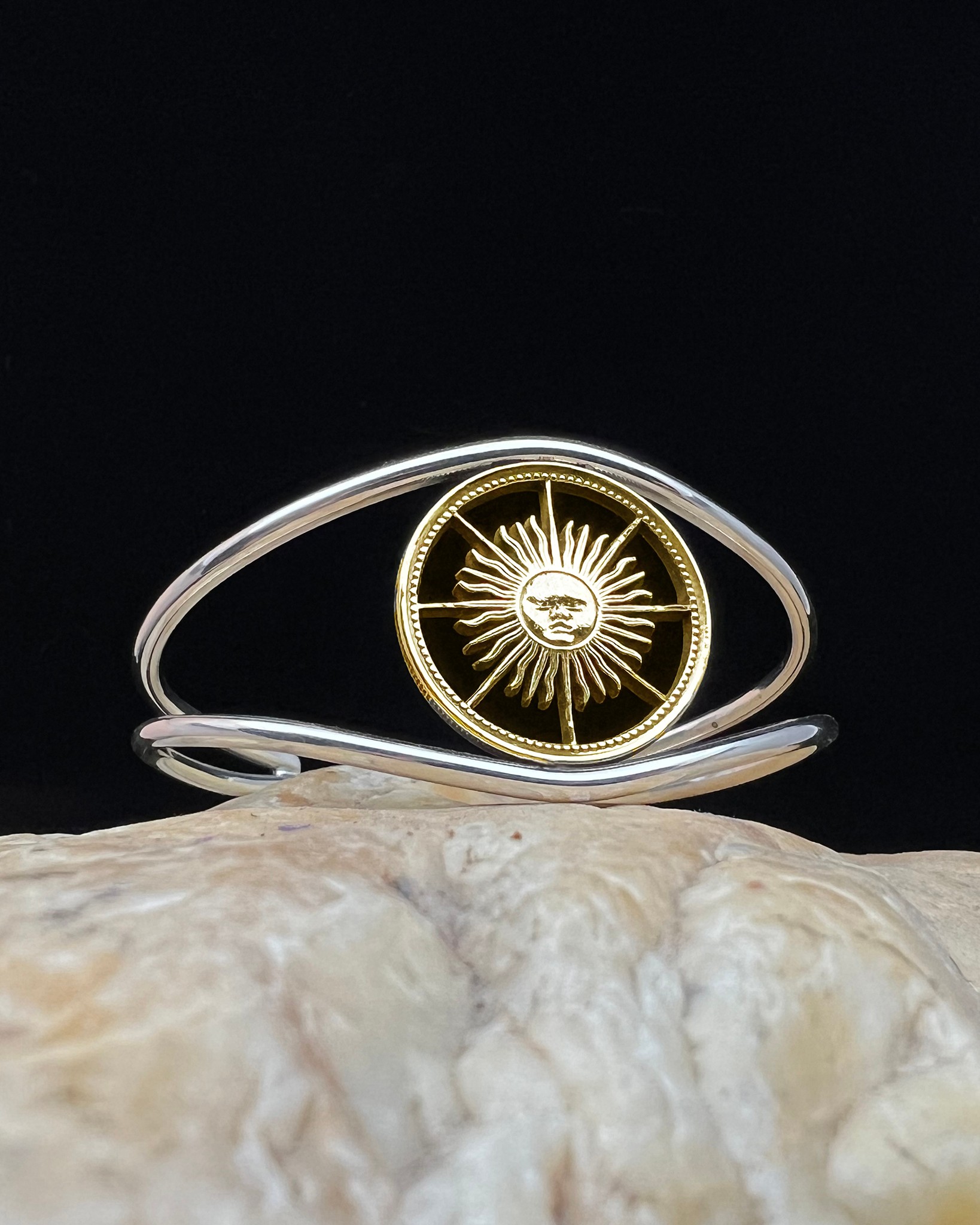We recently connected with Jarrett Leone and have shared our conversation below.
Jarrett, appreciate you joining us today. Can you talk to us about how you learned to do what you do?
I grew up in a family of jeweler’s and learned the art of silversmithing at my parents’ workbenches as a child. I practiced on and off, worked with some other artists and made it my side hustle for a long time. Ten years ago, I was able to make it my full time job.
I’m sure if I had dedicated myself to the craft full-time at an earlier point, I might be farther along in my career, but I have a love for all artistic mediums and outlets, and I spent a lot of time experimenting. I was 35 years old when I finally decided to attend art school, still unsure if I wanted to focus on sculpture, painting, jewelry or something else. But I have no regrets. Learning is a life-long process and I still intend to apply my skills as a silversmith to making other forms of art.

Jarrett, love having you share your insights with us. Before we ask you more questions, maybe you can take a moment to introduce yourself to our readers who might have missed our earlier conversations?
Growing up in a family of jeweler’s gave me access to the tools and techniques from a young age. I started my own jewelry studio with equipment gifted to me from my parents. I began working for myself in my 20’s as a side hustle, and went full time around age 40. The twenty years between saw me experimenting with many different fine and performing arts, and graduating with my BFA.
After I went full-time, I slowly began to specialize in making jewelry from hand-cut coins. I still do many other types of silversmithing, and I am actively learning new techniques such as etching and enameling. But cutting coins is my full time job and supports all other aspects of my creative experimentation.
My parents taught me to use the jeweler’s saw by having me cut Abe Lincoln’s profile out of old copper pennies. My love of using coins as an artistic medium endured, and now my cut coins are some of the finest and most detailed in the world. I am fascinated by the history and symbolism of coins, and how they connect people through space and time. I also appreciate the fact that coins are a pre-existing material. In all of my artwork, I enjoy repurposing materials any time I can.

What can society do to ensure an environment that’s helpful to artists and creatives?
The simplest way people can support artists, is to buy from them! Over the years, the emphasis on the arts in schools and society has diminished. Funding for fine art and craft has slowly dried up. The rise of A.I., laser engravers, 3D printers and other shortcuts to producing art and craft have added another level of challenge to artists that actually make things by hand. Being a full time artist using traditional techniques is incredibly expensive and time consuming. The only way we will see artists survive and thrive, and the next generations of artists rise, is if they are able to make a living at it. Choose to support independent makers whenever you can. Shop at local galleries and craft fairs. If it costs a little more the buy something hand-made rather than mass produced, consider it an investment in keeping art alive. If you can’t afford to make a purchase, share the artists social media pages and talk them up. Remember them around the holidays when you need to buy gifts. Every little bit helps!

Is there something you think non-creatives will struggle to understand about your journey as a creative? Maybe you can provide some insight – you never know who might benefit from the enlightenment.
I think many people don’t realize the amount of time that goes into bringing artwork from concept to market, especially in the modern world.
Let’s say a piece of jewelry takes five hours to make. That’s working time, only.
It doesn’t count learning the craft in the first place. Finding and ordering materials. Cleaning, organizing and maintaining a workshop. Before you start making, you have to plan the piece and figure out what you want to do. If you get up to go to the bathroom or answer the phone, you stop getting paid. If you make a mistake, and you have to start over, that is not factored in. Thanks to the online age, after it is made you have to photograph it, edit the photograph, upload it to a website, write descriptions, and then do it all again on social media. Most craft fairs want to see your website, Instagram and Facebook pages, so you can’t just ignore all of that. Then there is setting up a show, making a booth look good, travel time… the list goes on and on.
If you see a handcrafted piece of art from a professional, and they say it took them five hours to make, please realize that is not going to be the whole story.
Contact Info:
- Website: https://www.rnrlegacy.com/
- Instagram: https://www.instagram.com/rnrlegacy
- Facebook: https://www.facebook.com/rnrlegacy
- Twitter: https://bsky.app/profile/rnrlegacy.bsky.social
- Other: https://bsky.app/profile/rnrlegacy.bsky.social






